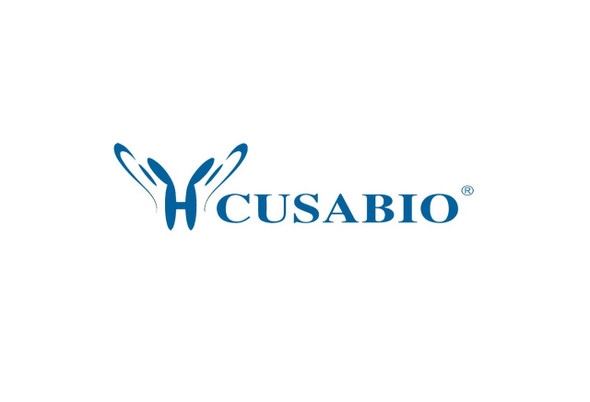Cusabio Human Recombinants
Recombinant Human Potassium voltage-gated channel subfamily E member 2 (KCNE2) | CSB-CF896548HU(A4)
- SKU:
- CSB-CF896548HU(A4)
- Availability:
- 3 - 7 Working Days
Description
Recombinant Human Potassium voltage-gated channel subfamily E member 2 (KCNE2) | CSB-CF896548HU(A4) | Cusabio
Alternative Name(s): Potassium voltage-gated channel subfamily E member 2(MinK-related peptide 1)(Minimum potassium ion channel-related peptide 1)(Potassium channel subunit beta MiRP1)
Gene Names: KCNE2
Research Areas: Others
Organism: Homo sapiens (Human)
AA Sequence: MSTLSNFTQTLEDVFRRIFITYMDNWRQNTTAEQEALQAKVDAENFYYVILYLMVMIGMFSFIIVAILVSTVKSKRREHSNDPYHQYIVEDWQEKYKSQILNLEESKATIHENIGAAGFKMSP
Source: in vitro E.coli expression system
Tag Info: N-terminal 10xHis-tagged
Expression Region: 1-123aa
Sequence Info: Full Length
MW: 17.3 kDa
Purity: Greater than 90% as determined by SDS-PAGE.
Relevance: Ancillary protein that assembles as a beta subunit with a voltage-gated potassium channel complex of pore-forming alpha subunits. Modulates the gating kinetics and enhances stability of the channel complex. Assembled with KCNB1 modulates the gating characteristics of the delayed rectifier voltage-dependent potassium channel KCNB1. Associated with KCNH2/HERG is proposed to form the rapidly activating component of the delayed rectifying potassium current in heart (IKr). May associate with KCNQ2 and/or KCNQ3 and modulate the native M-type current. May associate with HCN1 and HCN2 and increase potassium current. Interacts with KCNQ1; forms a heterooligomer complex leading to currents with an apparently instantaneous activation, a rapid deactivation process and a linear current-voltage relationship and decreases the amplitude of the outward current (PubMed:11101505).
Reference: "KCNE2 confers background current characteristics to the cardiac KCNQ1 potassium channel." Tinel N., Diochot S., Borsotto M., Lazdunski M., Barhanin J. EMBO J. 19:6326-6330(2000)
Storage: The shelf life is related to many factors, storage state, buffer ingredients, storage temperature and the stability of the protein itself. Generally, the shelf life of liquid form is 6 months at -20?/-80?. The shelf life of lyophilized form is 12 months at -20?/-80?.
Notes: Repeated freezing and thawing is not recommended. Store working aliquots at 4? for up to one week.
Function:
Involvement in disease:
Subcellular Location:
Protein Families:
Tissue Specificity:
Paythway:
Form: Liquid or Lyophilized powder
Buffer: If the delivery form is liquid, the default storage buffer is Tris/PBS-based buffer, 5%-50% glycerol. If the delivery form is lyophilized powder, the buffer before lyophilization is Tris/PBS-based buffer, 6% Trehalose, pH 8.0.
Reconstitution: We recommend that this vial be briefly centrifuged prior to opening to bring the contents to the bottom. Please reconstitute protein in deionized sterile water to a concentration of 0.1-1.0 mg/mL.We recommend to add 5-50% of glycerol (final concentration) and aliquot for long-term storage at -20?/-80?. Our default final concentration of glycerol is 50%. Customers could use it as reference.
Uniprot ID: Q9Y6J6
HGNC Database Link: N/A
UniGene Database Link: N/A
KEGG Database Link: N/A
STRING Database Link: N/A
OMIM Database Link: N/A






